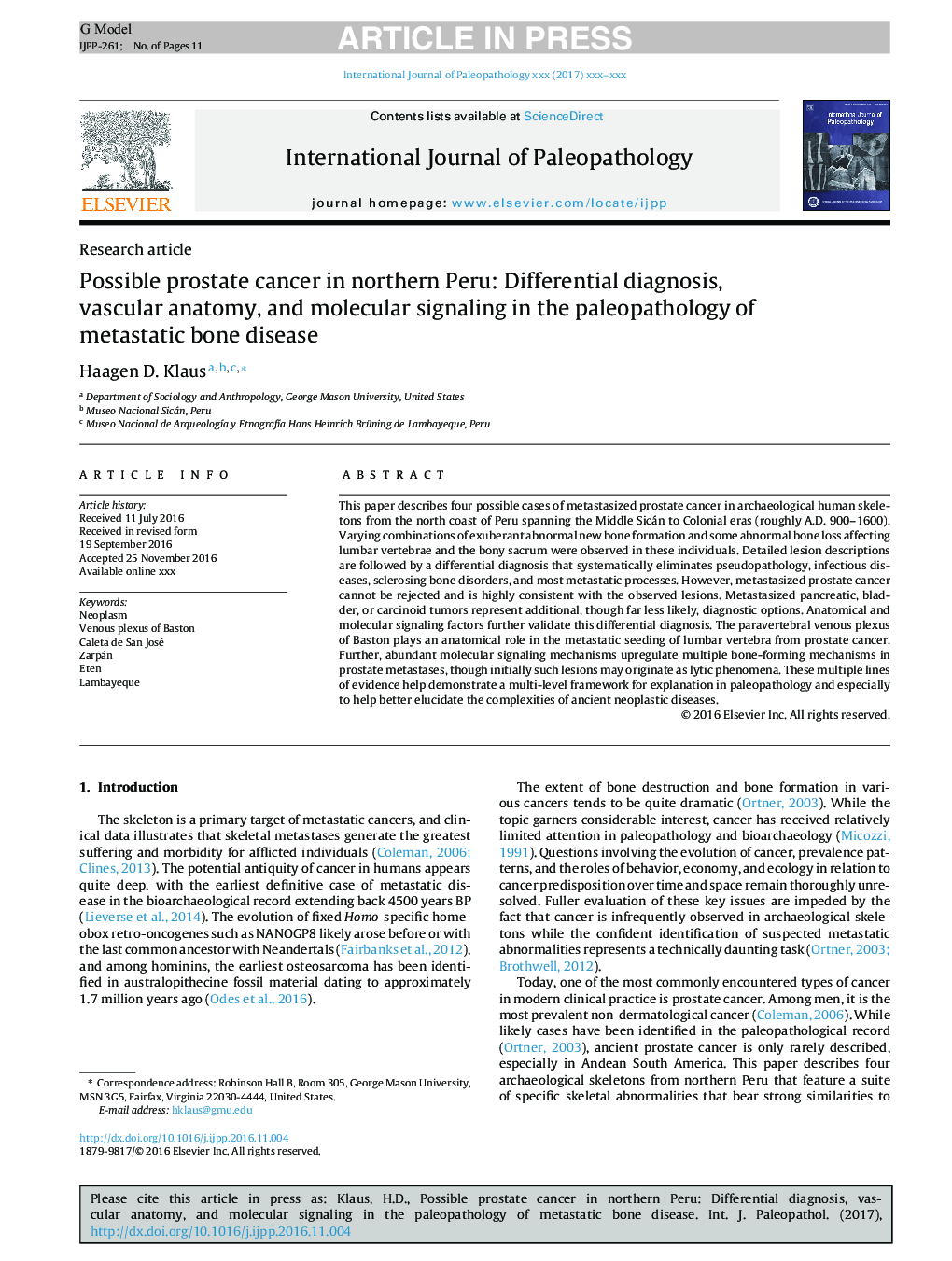| Article ID | Journal | Published Year | Pages | File Type |
|---|---|---|---|---|
| 6554770 | International Journal of Paleopathology | 2018 | 11 Pages |
Abstract
This paper describes four possible cases of metastasized prostate cancer in archaeological human skeletons from the north coast of Peru spanning the Middle Sicán to Colonial eras (roughly A.D. 900-1600). Varying combinations of exuberant abnormal new bone formation and some abnormal bone loss affecting lumbar vertebrae and the bony sacrum were observed in these individuals. Detailed lesion descriptions are followed by a differential diagnosis that systematically eliminates pseudopathology, infectious diseases, sclerosing bone disorders, and most metastatic processes. However, metastasized prostate cancer cannot be rejected and is highly consistent with the observed lesions. Metastasized pancreatic, bladder, or carcinoid tumors represent additional, though far less likely, diagnostic options. Anatomical and molecular signaling factors further validate this differential diagnosis. The paravertebral venous plexus of Baston plays an anatomical role in the metastatic seeding of lumbar vertebra from prostate cancer. Further, abundant molecular signaling mechanisms upregulate multiple bone-forming mechanisms in prostate metastases, though initially such lesions may originate as lytic phenomena. These multiple lines of evidence help demonstrate a multi-level framework for explanation in paleopathology and especially to help better elucidate the complexities of ancient neoplastic diseases.
Keywords
Related Topics
Life Sciences
Biochemistry, Genetics and Molecular Biology
Physiology
Authors
Haagen D. Klaus,
